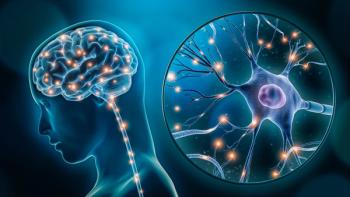
Functional vs Structural Cortical Deficit Pattern Biomarkers for Major Depressive Disorder
Key Takeaways
- Regional homogeneity (ReHo) in fMRI correlates with decreased regional cerebral blood flow (RCBF) in MDD, offering a potential biomarker.
- Lower ReHo in the cingulum, superior temporal lobe, and frontal lobe correlates with MDD severity, surpassing structural approaches.
Researchers uncover a novel biomarker for major depressive disorder, linking regional homogeneity in fMRI to decreased cerebral blood flow and symptom severity.
With markedly inconsistent previous neuroimaging studies on
Analysis was performed on previously collected data sourced from 4 different datasets. Data were sourced from different sets because there was no prior study which collected the same RCBF measurements the authors evaluated for both controls and MDD patients. Investigators found that data from those with MDD had lower cortical regional homogeneity in specific regions, and that regional patterns of homogeneity were significantly correlated with a decrease in RCBF. The regions of interest which showed this lower homogeneity were the cingulum, superior temporal lobe, and frontal lobe.
From their results, the authors suggest a consistent, regionally-specific decreased blood flow found in MDD which can be associated with regional homogeneity deficits; this functional approach was found to be more strongly associated with quantitative depression symptom ratings than with a structural approach. Therefore, a more functional and ReHo based regional variability index (RVI) may be a useful novel biomarker for MDD. In the regions in question, there was no significant difference in cortical thickness, providing further evidence against cortical atrophy as the main mechanism occurring with MDD.
The neurological effects of MDD are often seen as reductions in RCBF, and the authors used resting-state fMRI data to gather ReHo values—values which have been linked to RCBF in healthy participants. They posited that effect sizes for ReHo values in those with MDD could be a proximal measurement for RCBF and would show a stronger association to MDD than previously seen in structural MRI. RCBF is closely linked with MDD, and ReHo measurements are connected to these blood flow changes. Using fMRI data, investigators measured the amount of similarity in timing of resting-state BOLD signals in neighboring voxels of specific regions. After identifying differences in blood flow in these regions between participants with MDD and controls, they compared region-specific ReHo effect sizes with structural measurements to evaluate if deficits in ReHo patterns indicated RCBF. ReHo measurements gathered from fMRI were taken to be a proximal measurement for RCBF.
Because regional patterns of deficit were consistent across ReHo and RCBF, ReHo provides evidence for a reproducible pattern of region-specific lack of blood flow in those with MDD. With this functional measurement, the authors found that using a function-based RVI founded on ReHo deficit patterns was significantly correlated with severity of depression symptoms, meaning that larger ReHo deficits came with more severe symptoms. Structural RVIs had much smaller effect sizes and had no significant correlation to symptom ratings, indicating that functional RVIs are stronger indexes of MDD.
Measuring functional deficit patterns provides a pattern-based biomarker for MDD and demonstrates that the ReHo deficits are related to regional decreases in blood flow. The finding here "suggests a novel mechanistic interpretation of this readily available resting-state functional MRI measure and urges reexamination and reinterpretations of previous ReHo findings across neuropsychiatric illnesses," the authors stated. These pattern findings indicate that a functional, ReHo-based regional variability index may be an improved marker for MDD. This new index may be useful in further investigation of MDD using markers distinctly connected to patterns in pathophysiology. The study concluded also that "ReHo as a resting-state functional MRI technique may open new doors to the study of brain perfusions in future etiological and interventional studies of neuropsychiatric conditions."
References
1. Kochunov P, Adhikari BM, Keator D, et al.
2. Cooper CM, Chin Fatt CR, Liu P, et al.
Newsletter
Receive trusted psychiatric news, expert analysis, and clinical insights — subscribe today to support your practice and your patients.














